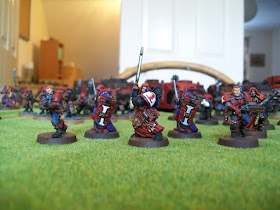 Gene Wolfe has long been considered one of the great writers of science-fiction and fantasy, for his deep, though-provoking works. A few years ago, I tried to read one of his most popular works, Shadow of the Torturer, but gave up about halfway through. His slowly developing plot line, combined with his difficult writing style made the book an unpleasant challenge that did not appeal to me at the time.
Gene Wolfe has long been considered one of the great writers of science-fiction and fantasy, for his deep, though-provoking works. A few years ago, I tried to read one of his most popular works, Shadow of the Torturer, but gave up about halfway through. His slowly developing plot line, combined with his difficult writing style made the book an unpleasant challenge that did not appeal to me at the time.Well, as I start up my renewed quest to read 100 great books of sci-fi/fantasy, I thought I would give him another try. This decision was made easier when I found a copy of Nightside: The Long Sun in my local library. This book is actually the first in a four book series, but I decided from the outset, that for the moment, I’d only read this one, so I set off.
I almost gave up on the book in the first chapter. It opens with a man playing some kind of ballgame, who suddenly receives ‘enlightenment’, that is, in one instant he knows everything, including the will of the gods. It is an incredibly confusing introduction as there is very little to anchor the reader to place or time. Still, I persevered, and the book quickly settled down into a seemingly mundane story about an augur (read: priest to all the gods) attempting to save his school/church from being sold. This leads him into burglary and dealings with shady characters. The prose is enjoyable enough, but again the plot is slow to develop, and at times doesn’t seem to be going anywhere particular. What really kept me reading was the augurs naive, but appealing character, and his relationship with the various gods, especially the mysterious ‘Outsider’. The question to the book isn’t really if the augur will save his church, but who exactly are these gods and what do they want?
Unfortunately, you don’t really learn many answers in the book, and the book seems to end on a note nearly as confusing as it began. Did I enjoy the book – yes, mostly. Am I ready to tackle book two? Not even close. I think it is very likely that I will return to this series somewhere down the line, but for now I think it is best if I leave it to rest and marinate in my subconscious.






















